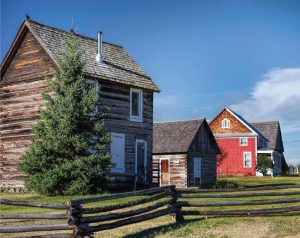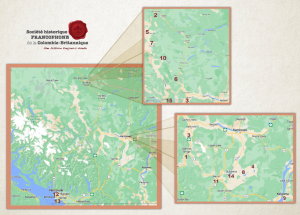The birth of the BC cattle industry
GOLD! The gold fever of 1858 stampeded up the Fraser river to the Cariboo and into the valleys of the Thompson, Nicola and Okanagan. Cattlemen in the Oregon Territory (today’s Washington State and Oregon and parts of Idaho and Montana) saw the chance to sell meat to miners. Drovers and cowboys began moving thousands of cattle into the new Crown Colony of British Columbia.
By the late 1860s, gold deposits were depleted. The European population of the colony was fewer than 5,000, most of them living along its coast. The new Dominion of Canada was courting the colony to join its Confederation of 1867 by promising a transcontinental railroad that would create a new wave of settlement in the West.
British Columbia joined Canada in 1871. Cowboys and gold miners-turned-entrepreneurs now felt their future was secure, and many bought or pre-empted land made available to settlers by the removal of Indigenous Peoples from their traditional territories. The ranch lands of the Interior soon supported herds of cattle.
Some newcomers developed roadhouses along stagecoach routes, providing fresh horses and basic overnight rest stops for travelers. Fascinating tales were already being spun on this rangeland.
This exhibition could not cover all of the Francophone ranchers in these regions, but aims at providing an overview of their distribution. Others, such as Antoine and Joséphine Rey, from Savoie in France and operating at Mamette Lake north of Merritt, and Joseph and Anne Christien, from Québec and established north of Kelowna, also played their role in the province’s development.



